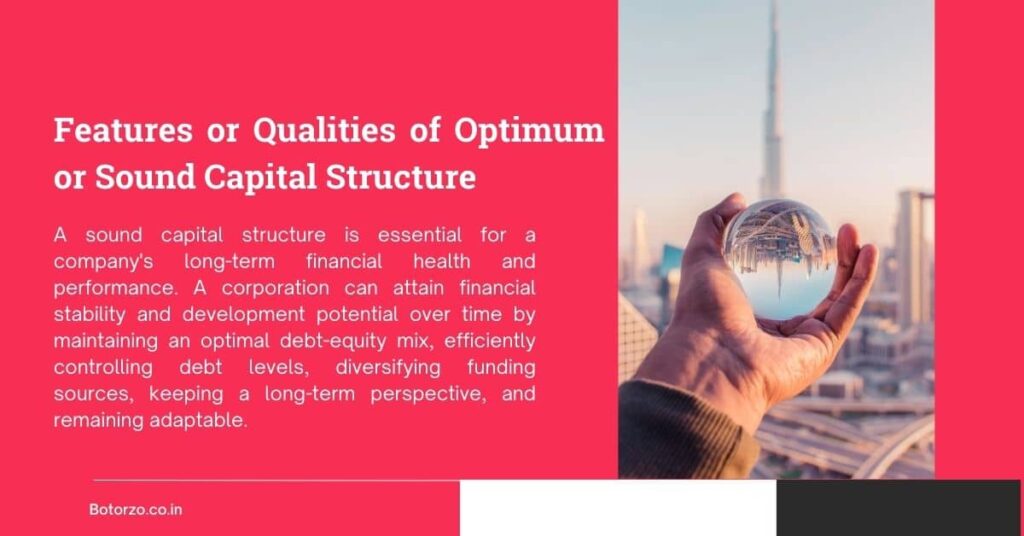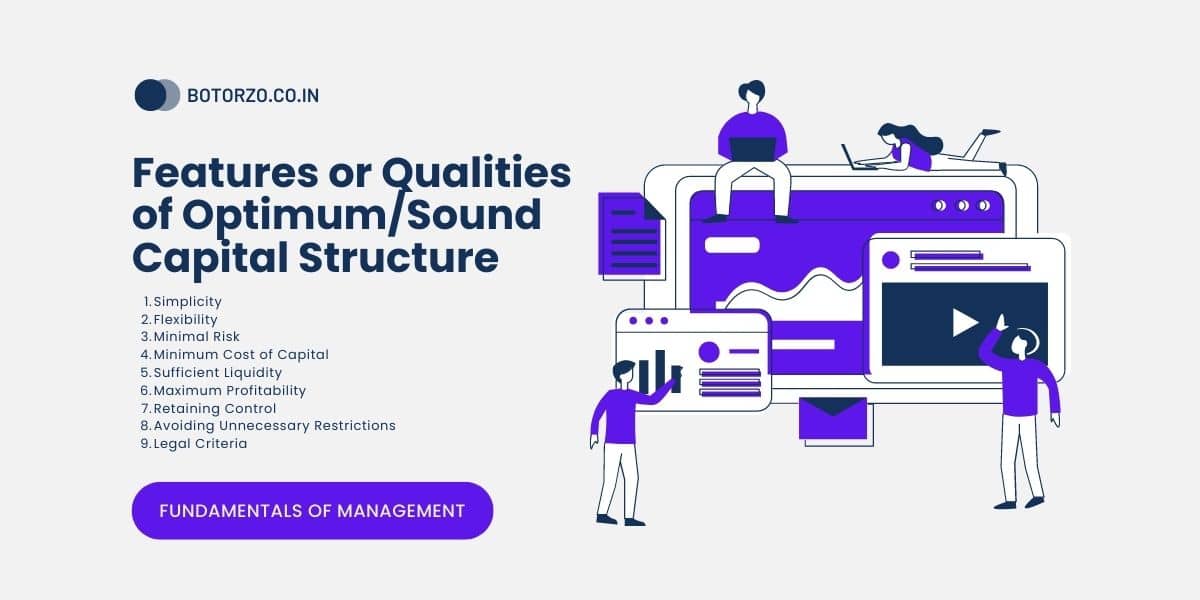The qualities of an optimum or sound capital structure should have the following characteristics :
A sound capital structure typically has several key features that enable a company to operate and grow sustainably over the long term. Here are some of the most important features:
Qualities of Sound or Optimum Capital Structure
Simplicity
The capital structure should be as fundamental as feasible. Simplicity implies that, in addition to equity and preference capital, the minimal kind of long-term securities should be Initially, only equal and preference shares should be issued, with debt instruments following later.
Flexibility
The capital structure should be sufficiently adaptable to allow for changes as needed. If altered circumstances justify it, a corporation should be able to restructure its capital structure with minimal expense and delay. Because debt may be raised when needed and repaid when not, it makes the sound capital structure more flexible.
Minimal Risk
The capital structure should be designed to minimize risk. Excessive debt jeopardizes the firm’s solvency since it entails a set commitment to pay interest regardless of profits. Debt should be utilized only when it does not create considerable risk. Debt should be avoided otherwise.
Minimum Cost of Capital
The cost of capital is defined as the interest on loans or the dividend on stock. Debt is a less expensive form of finance than stock capital since the interest rate is lower than the return expected by equity shareholders, and interest is tax-deductible, further lowering the cost of debt. Preferred share capital is less expensive than equity capital, although not as inexpensive as debt. As a result, the optimal or sound capital structure should include a significant quantity of debt because it is the least expensive source of credit.
Sufficient Liquidity
Liquidity refers to a company’s capacity to pay interest and principal on time. A company is deemed liquid if it can pay interest and principal under realistically anticipated bad situations. As a result, while establishing the optimal amount of debt, it is critical to consider how a firm’s liquidity will be maintained during a recession.
Maximum Profitability
The company’s capital structure must deliver the highest possible return to equity stockholders. If there is a chance of generating a more significant return on the company’s assets than the cost of debt, the firm can utilize a big amount of debt to maximize its profitability; otherwise, the corporation should avoid using loan capital.
Retaining Control
The capital structure should assist the current management in maintaining control of the firm. Debt should be chosen above equity capital for raising additional cash for this reason. Deht holders do not have voting rights in company meetings and thus cannot elect the company’s directors, whereas equity shareholders do.
Avoiding Unnecessary Restrictions
The capital structure should avoid imposing unnecessary constraints on the company. Tenn loans should be avoided since they impose a number of restrictions on the company’s ability to borrow money in the future.
Legal Criteria
The capital structure must meet all legal requirements. The Securities and Exchange Board of India (SEBI) provides guidelines on a regular basis.

A sound capital structure is essential for a company’s long-term financial health and performance. A corporation can attain financial stability and development potential over time by maintaining an optimal debt-equity mix, efficiently controlling debt levels, diversifying funding sources, keeping a long-term perspective, and remaining adaptable.
Frequently Asked Questions
What Is the Optimum or sound Capital Structure?
When Capital Cost Is Low And Total Firm Value Is High.
Is the Optimum or sound capital structure the same?
Yes.

